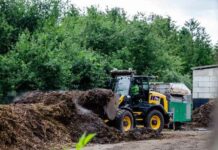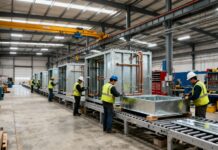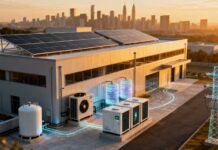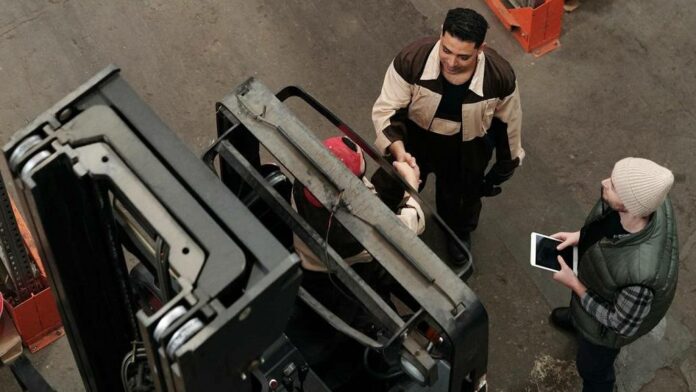While both types have a strong presence across industries, the right choice ultimately depends on the specific needs and priorities of your worksite.
Before making a purchase or rental commitment, it’s worth diving into how these two options really compare, not just in specs, but in day-to-day use.
Understanding the Core Differences
At the most basic level, diesel forklifts are powered by internal combustion engines, while electric forklifts run on rechargeable batteries. But that difference in fuel source ripples into a long list of real-world distinctions—affecting noise levels, power output, emissions, maneuverability, and more.
Diesel forklifts are known for their sheer strength and endurance. They’re typically used in heavy-duty outdoor applications such as construction sites, lumber yards, and shipping docks.
They can handle uneven terrain, lift heavier loads, and run for long hours without stopping for a recharge.
Electric forklifts, on the other hand, shine in indoor environments where clean air and quiet operation are critical.
Warehouses, distribution centers, and food storage facilities often lean toward electric options because they don’t produce emissions and are far quieter, reducing both environmental and auditory strain on workers.
But these aren’t just surface-level features. The operational differences between the two can have major implications for your budget, efficiency, and worksite logistics.
Ownership brings a different lens to the decision. Buying diesel equipment means you’re taking on more intensive maintenance responsibilities and fuel costs, but you gain robust performance and independence from charging systems.
It’s a solid long-term choice if you’re running heavy operations outdoors and need durable, all-weather capability. Otherwise it’s wiser to hire forklift service like All Lift Forklifts when you need it.
Electric forklifts, when owned, offer lower total cost of ownership over time—especially for single-shift operations. They require less maintenance, use cheaper energy, and support ESG goals, which can matter for branding or future certifications.
However, you’ll need to plan for battery replacement after a few years and potentially invest in charging stations.
Weighing the Trade-Offs: Performance, Cost, and Environment
Power and Performance
When it comes to sheer muscle, diesel forklifts generally win. They offer more torque, can handle inclines and outdoor conditions better, and aren’t limited by battery life. If you’re regularly lifting heavy loads—especially more than 10,000 lbs—or working on uneven surfaces, a diesel model can provide the consistency and ruggedness required.
Electric forklifts, while increasingly capable, may struggle with extended outdoor use or wet and muddy surfaces. However, they excel at precision. The electric motor allows for smoother acceleration and deceleration, which makes them ideal for confined warehouse aisles or tasks requiring frequent stops and tight turns.
Maintenance and Operating Costs
Diesel engines have more moving parts and require more frequent maintenance. Oil changes, fuel system checks, and exhaust servicing are routine, and downtime for repairs can be longer. Diesel fuel also fluctuates in price and tends to be more expensive over time than electricity—especially when paired with high usage.
Electric forklifts are generally cheaper to operate and maintain. Battery charging is more stable in cost, and there are fewer components to wear out. However, batteries themselves have a lifespan, typically 5–7 years, and replacing them isn’t cheap.
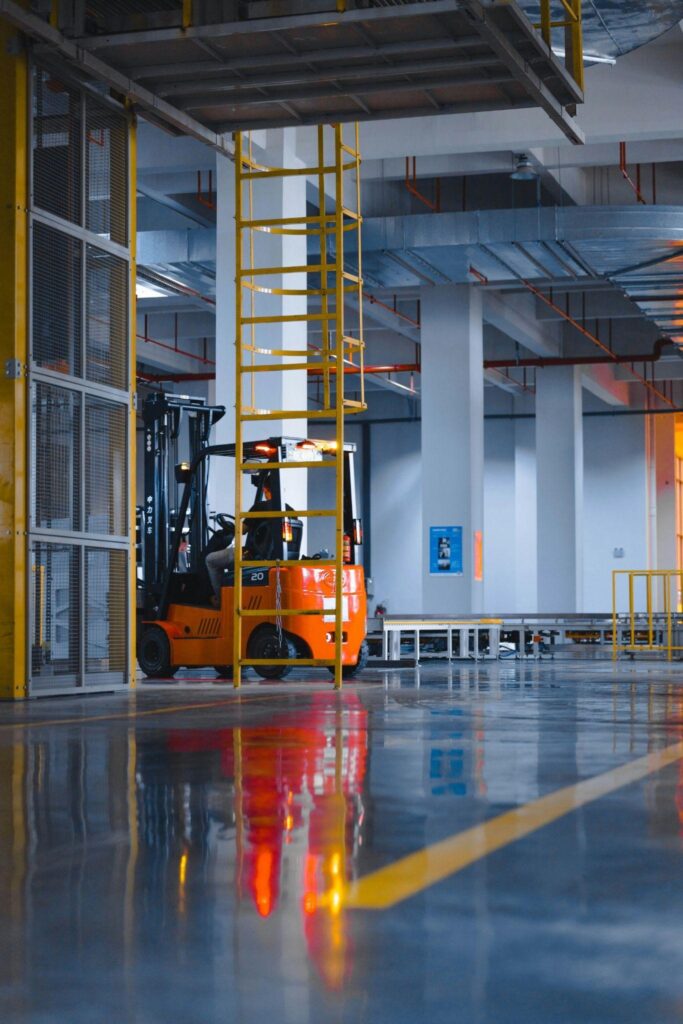
There’s also the question of charging infrastructure, which may require up-front investment if your site isn’t already set up for electric equipment.
If you’re working two or three shifts a day, you’ll also need backup batteries or fast-charging systems, because recharging between shifts might not be feasible. Still, for single-shift operations, the electric option can deliver significant cost savings over time.
Environmental and Workplace Considerations
Diesel forklifts emit exhaust, which can be harmful in enclosed spaces or poorly ventilated areas. They’re noisy, they smell like fuel, and they can increase indoor pollution.
Even with filters or modern Tier 4 engines, diesel emissions can impact worker health and may run afoul of local environmental regulations or sustainability goals.

Electric forklifts offer a much cleaner alternative. They’re quiet, fume-free, and contribute to a better overall indoor work environment. Many businesses have shifted toward electric options to meet ESG (Environmental, Social, and Governance) targets or to appeal to clients who prioritize green logistics.
In some jurisdictions, government incentives or rebates may even be available to encourage the transition to electric-powered equipment.
Making the Right Choice for Your Site
So how do you decide? The right forklift isn’t just about specs—it’s about matching a machine to your operational demands, workflow, and environment.
Think About Your Worksite Conditions
If your worksite is primarily outdoors and involves heavy lifting on rough terrain, diesel might be hard to beat. The extra torque, longer runtime, and resilience in unpredictable weather make it a solid, reliable choice.
But if your facility is indoors, or located in a residential area with noise restrictions, electric forklifts make more sense.
They’re easier on the ears, better for air quality, and more compatible with enclosed spaces. In retail warehouses or facilities that handle food and medical supplies, electric is often the only viable choice due to health regulations.
Consider Your Daily Usage
How many hours a day are your forklifts in use? How often are they idle? Diesel forklifts are best for continuous, long-haul work. They can be refueled quickly and get back to work with little delay. Electric forklifts need time to charge and can’t be “topped off” in the same way—though modern battery-swapping stations are changing that.
For high-volume operations, downtime matters. If charging logistics aren’t already built into your workflow, diesel might offer fewer interruptions. But for moderate use—especially on predictable daily shifts—electric models can do the job just fine with the bonus of lower operating costs.
Look at Long-Term Goals
Beyond performance, think about what you want your investment to support.
Do you plan to scale your business, open more indoor facilities, or improve your sustainability profile? Are you operating in an area where fuel prices fluctuate wildly or regulations on emissions are tightening?
Electric forklifts are increasingly seen as future-proof. While diesel isn’t going anywhere anytime soon, its footprint—both financial and environmental—is coming under more scrutiny.
If your company wants to lower emissions, reduce noise complaints, or benefit from renewable energy sources, electric models offer a cleaner path forward.
Final Word: It’s Not Either/Or—It’s What Fits Best
There’s no one-size-fits-all answer when it comes to forklifts. The best option is the one that fits your worksite’s environment, load demands, and long-term goals.
Diesel forklifts are built for power and endurance in the toughest conditions. Electric forklifts offer clean, quiet efficiency and long-term cost savings for indoor and sustainability-focused operations.
In many cases, businesses even run hybrid fleets—using diesel for yard or construction work, and electric for indoor inventory handling. Whatever you choose, understanding the trade-offs helps ensure your investment works smarter, lasts longer, and supports the direction your business is headed.















